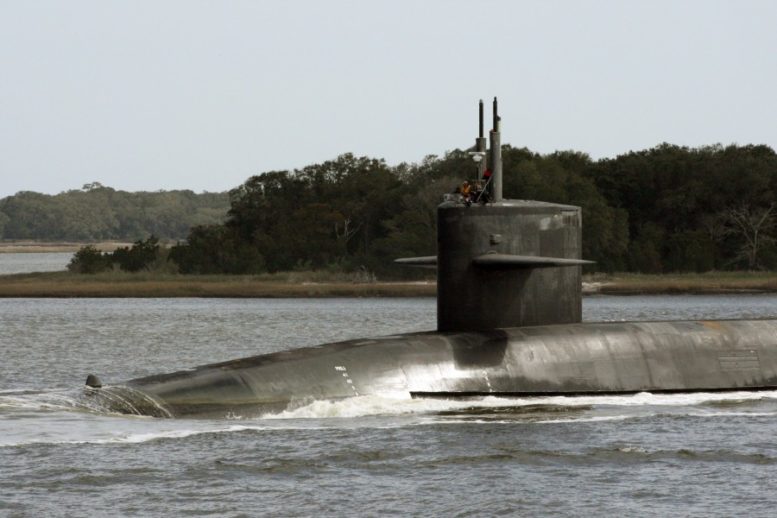 A Dr. Michael Krop High School 2008 graduate and Miami native, Seaman Gabriel Camacho is serving in the U.S. Navy as part of a crew working aboard one of the world’s most advanced ballistic missile submarines, USS Wyoming (SSBN 742).
A Dr. Michael Krop High School 2008 graduate and Miami native, Seaman Gabriel Camacho is serving in the U.S. Navy as part of a crew working aboard one of the world’s most advanced ballistic missile submarines, USS Wyoming (SSBN 742).
Camacho is a culinary specialist serving aboard the Kings Bay, GA-based boat, one of 14 Ohio-class ballistic missile submarines.
A Navy culinary specialist is responsible for preparing the crew’s meals.
“The best thing that I like about my job is it gives me a great sense of pride,” Camachosaid.
Measuring 560 feet long, 42 feet wide and weighing more than 16,500 tons, the ship’s a nuclear-powered propulsion system helps push it through the water at more than 20 knots.
The Navy’s ballistic missile submarines, often referred to as “boomers,” serve as an undetectable launch platform for intercontinental ballistic missiles. They are designed specifically for stealth, extended patrols and the precise delivery of missiles if directed by the President.
The Ohio-class design allows the submarines to operate for 15 or more years between major overhauls. On average, the submarines spend 77 days at sea followed by 35 days in-port for maintenance.
“We demand the highest standards from our sailors — both professionally and personally,” said Rear Admiral Randy Crites, Commander, Submarine Group Ten in Kings Bay, GA. “Seaman Camacho’s chain of command, family and our great nation take immense pride in his devotion and service to his country. The importance of our sailors is immeasurable; people like Gabriel Camacho are absolutely crucial to ensuring our ships and submarines are operating at their best — always mission ready, providing our nation with the greatest navy the world has ever known. I’m so very proud he is on our team.”
Camacho is part of the boat’s “Blue Crew,” one of the two rotating crews, which allow the ship to be deployed on missions more often without taxing one crew too much. A typical crew on this submarine is approximately 150 officers and enlisted.
Because of the stressful environment aboard submarines, personnel are accepted only after rigorous testing and observation. Submariners are some of the most highly trained and skilled people in the U.S. Navy. The training is highly technical and each crew has to be able to operate, maintain, and repair every system or piece of equipment on board. Regardless of their specialty, everyone also has to learn how everything on the ship works and how to respond in emergencies to become “qualified in submarines” and earn the right to wear the coveted gold or silver dolphins on their uniform.
“Serving is like no other job I’ve had before and there is never a dull moment,” Camacho said.
Although it is difficult for most people to imagine living on a submarine, challenging submarine living conditions actually build strong fellowship among the crew. The crews are highly motivated, and quickly adapt to changing conditions. It is a busy life of specialized work, watches and drills.
As a member of one of the U.S. Navy’s most relied upon assets, Camacho and other Wyoming sailors know they are part of a legacy that will last beyond their lifetimes.
“The Navy has given me a sense of duty,” Camacho added. “It’s given me an appreciation of how team work can make a group a well oiled machine.”





